‘Oh Boy!’
My radio show recalling the days in 1958 when I was a Call Boy at ATV on the UK’s first TV Rock n Roll show, live from Hackney Empire, ‘Oh Boy’, goes out on Sunday 23 April at 11am on Purbeck Coast 101.2 FM and purbeckcoast.com
It is on Soundcloud now;
This is the film I made, 8mm silent B&W with dubbed sound;
The Commonwealth Show
The Commonwealth Show features music and anecdotes from some of the member countries that I have visited during my time as a travel photographer.
Now available at https://soundcloud.com/user151312032/the-commonwealth-show

Red Rum – The Radio Show!
Here is my unique and personal radio tribute to Red Rum that was broadcast on Purbeck Coast 101.2 FM and streamed online worldwide in April 2023.
https://soundcloud.com/user151312032/red-rum
Hope you enjoy it!
RED RUM – 50 Years On!
A short trailer for my one hour radio story about him and music from the time which will air on Sunday on Purbeck Coast 101.2 FM.
London Art Fair at Business Design Centre, Islington, London
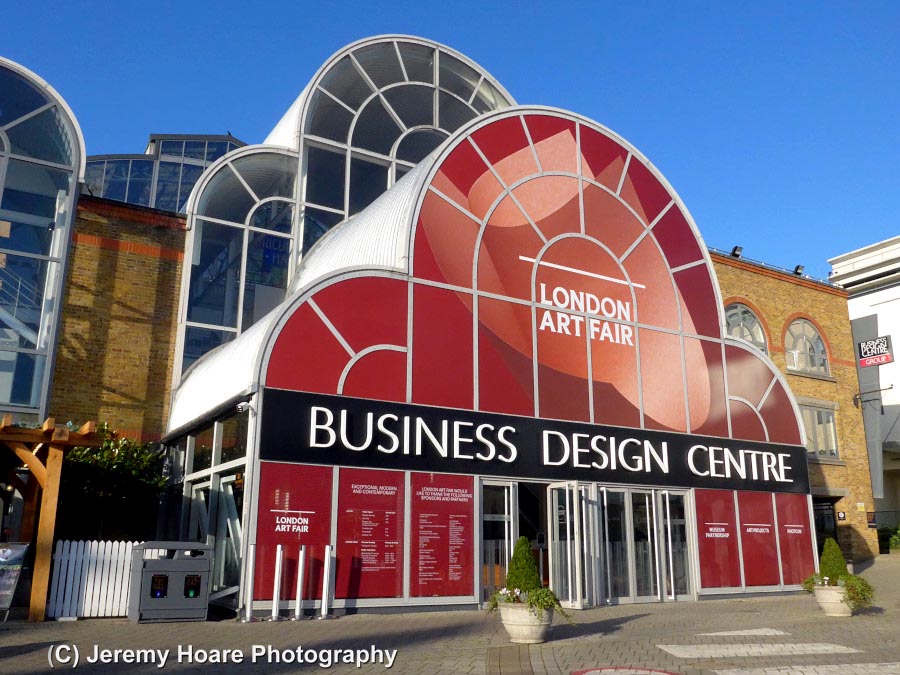
This excellent art fair, now in its 32nd year. Is a good showcase to see modern and contemporary art of our time, and buy if you like what you see.
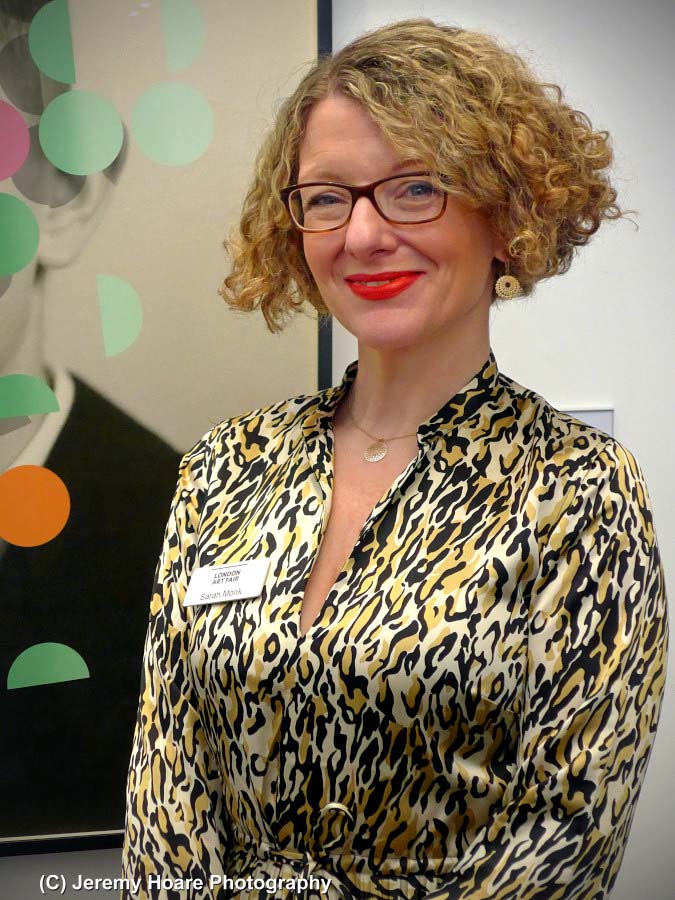
The fair’s director is the charming and elegant Sarah Monk who enjoys her role with obvious joy and pride; as well she might for what is the best annual event of its type in London.
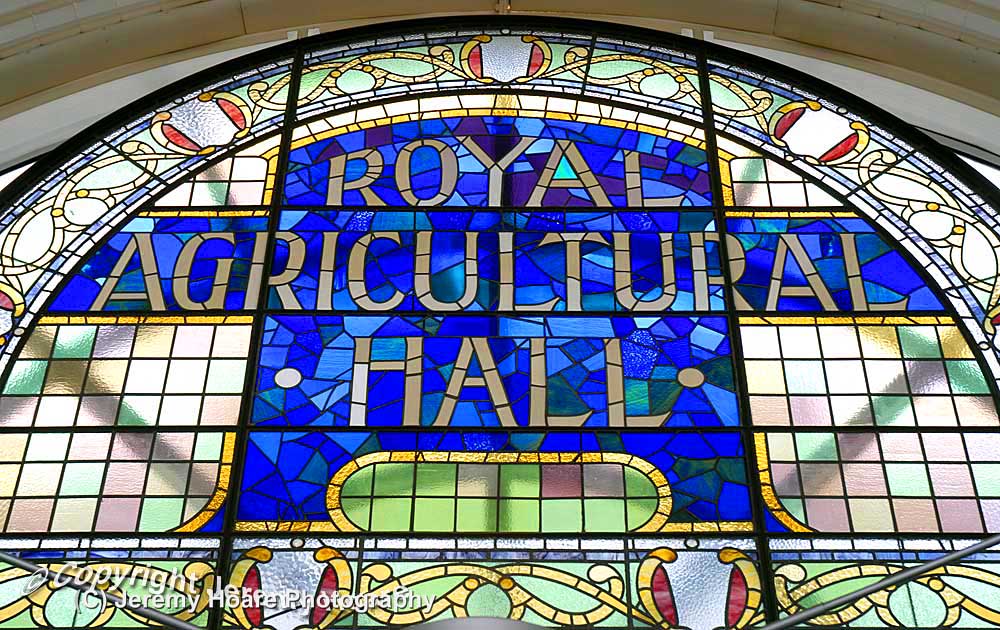 The Business Design Centre used to be the Royal Agricultural Hall, built in 1862, and my own link with it is that my great grandfather, Frederick Freeman-Lloyd, used to judge at dog shows there about 120 years ago, he was probably a judge at Cruft’s when it was there.
The Business Design Centre used to be the Royal Agricultural Hall, built in 1862, and my own link with it is that my great grandfather, Frederick Freeman-Lloyd, used to judge at dog shows there about 120 years ago, he was probably a judge at Cruft’s when it was there.
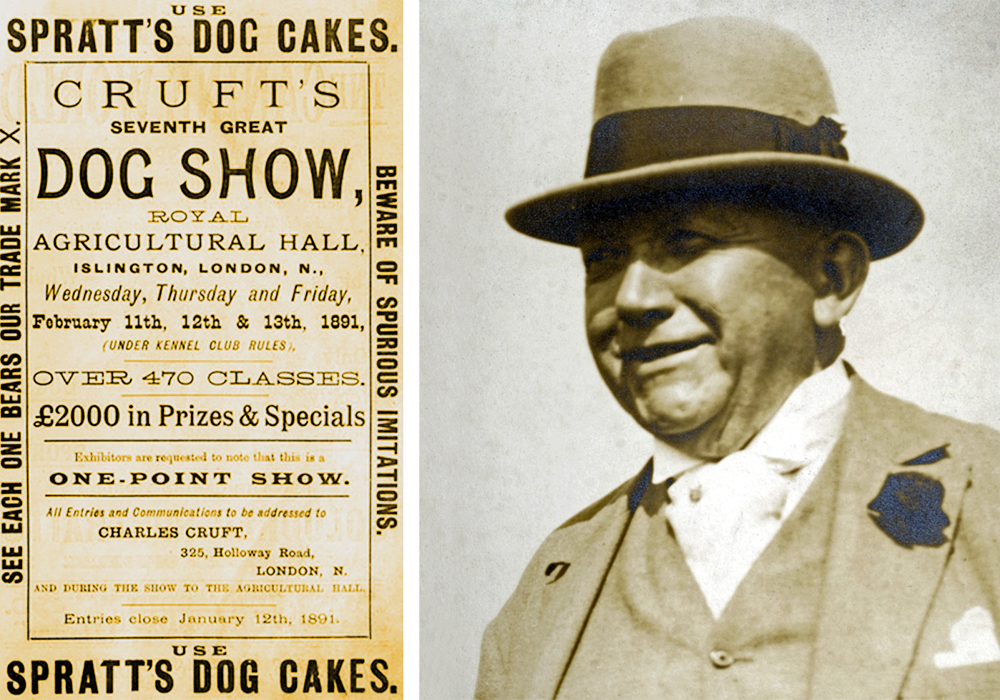
There is much to see, some excellent and some pretentious, typical of any art show!

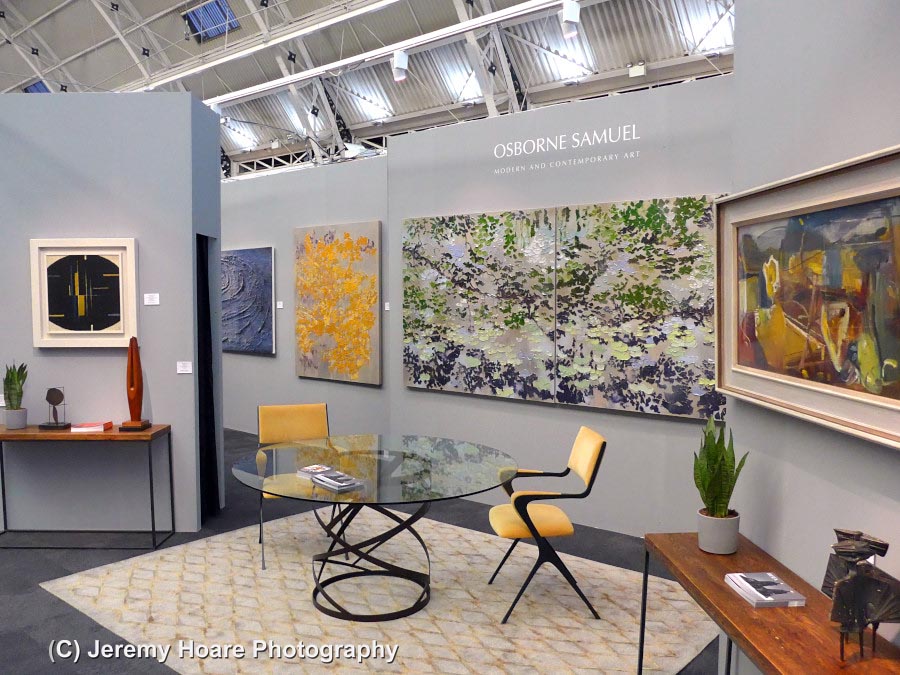
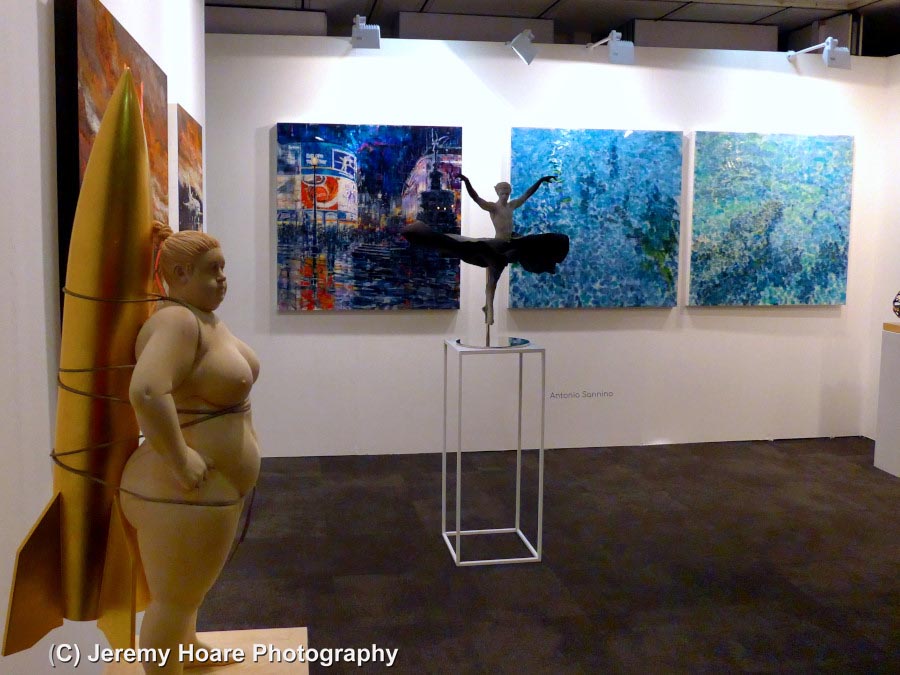
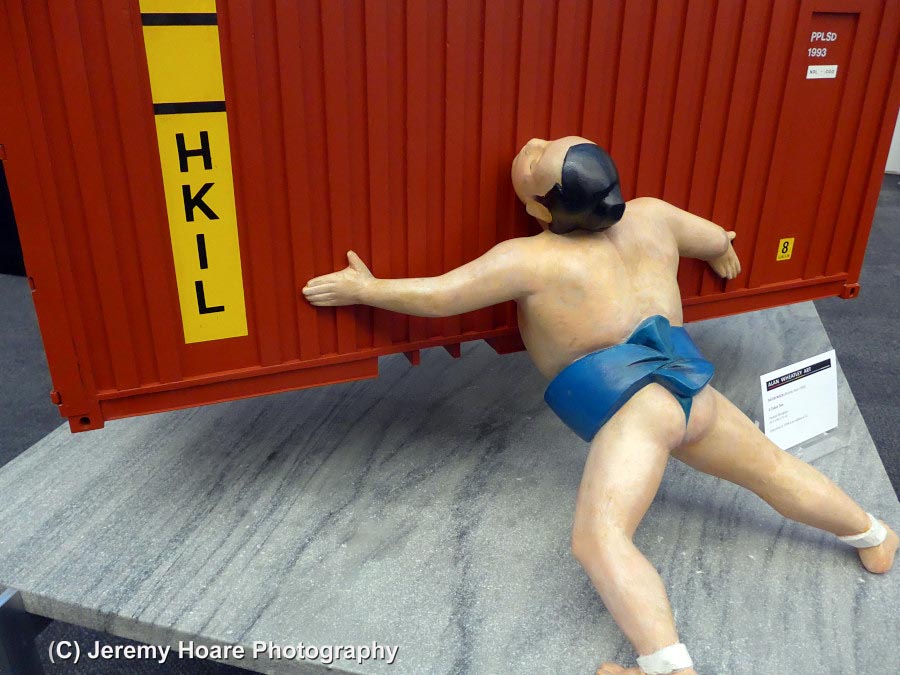
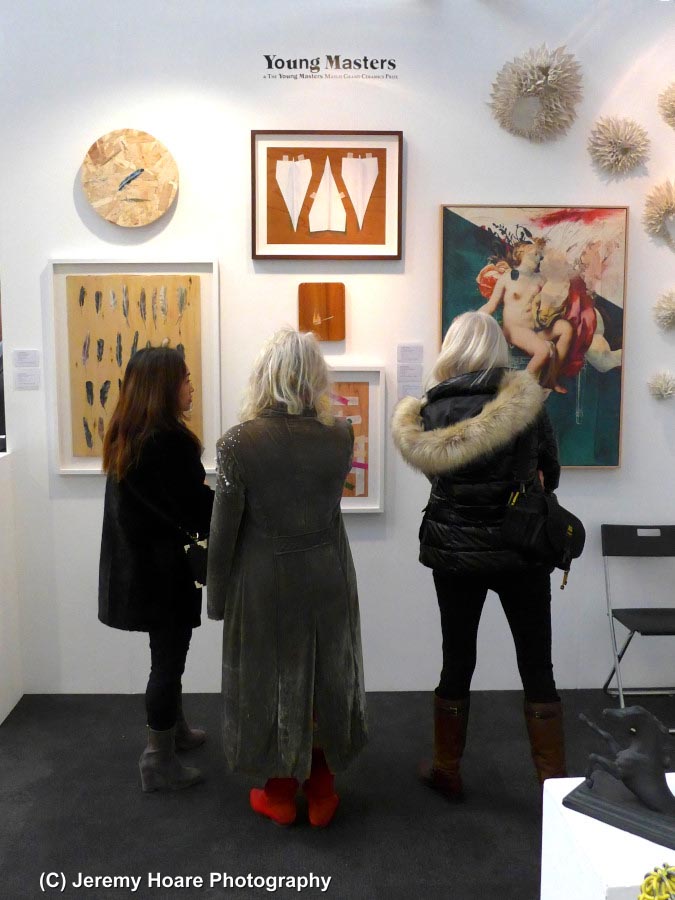
Mary Poppins at the Prince Edward Theatre

Poster for the 1964 Mary Poppins film
Walt Disney hard a hard job of persuading author P. L. Travers at her Chelsea home to allow him to make Mary Poppins into a film but we can be grateful he did as it has pleased many people worldwide since 1964.

Julie Andrews and Charles Stapley talking to my mother in on the closing night of My Fair Lady at Theatre Royal Drury Lane 1963
The last time I saw anything at the Prince Edward Theatre. which had previously been the Cinerama cinema, was back in 1978 when I attended the First Night of Evita with Elaine Paige which was wonderful. It was revived at The Adelphi Theatre in 2010 with the Argentinian superstar Elena Roger in the lead and summer 2019 saw it at the Regent’s Park Open Air Theatre with my talented friend Mireia Mambo in the cast.
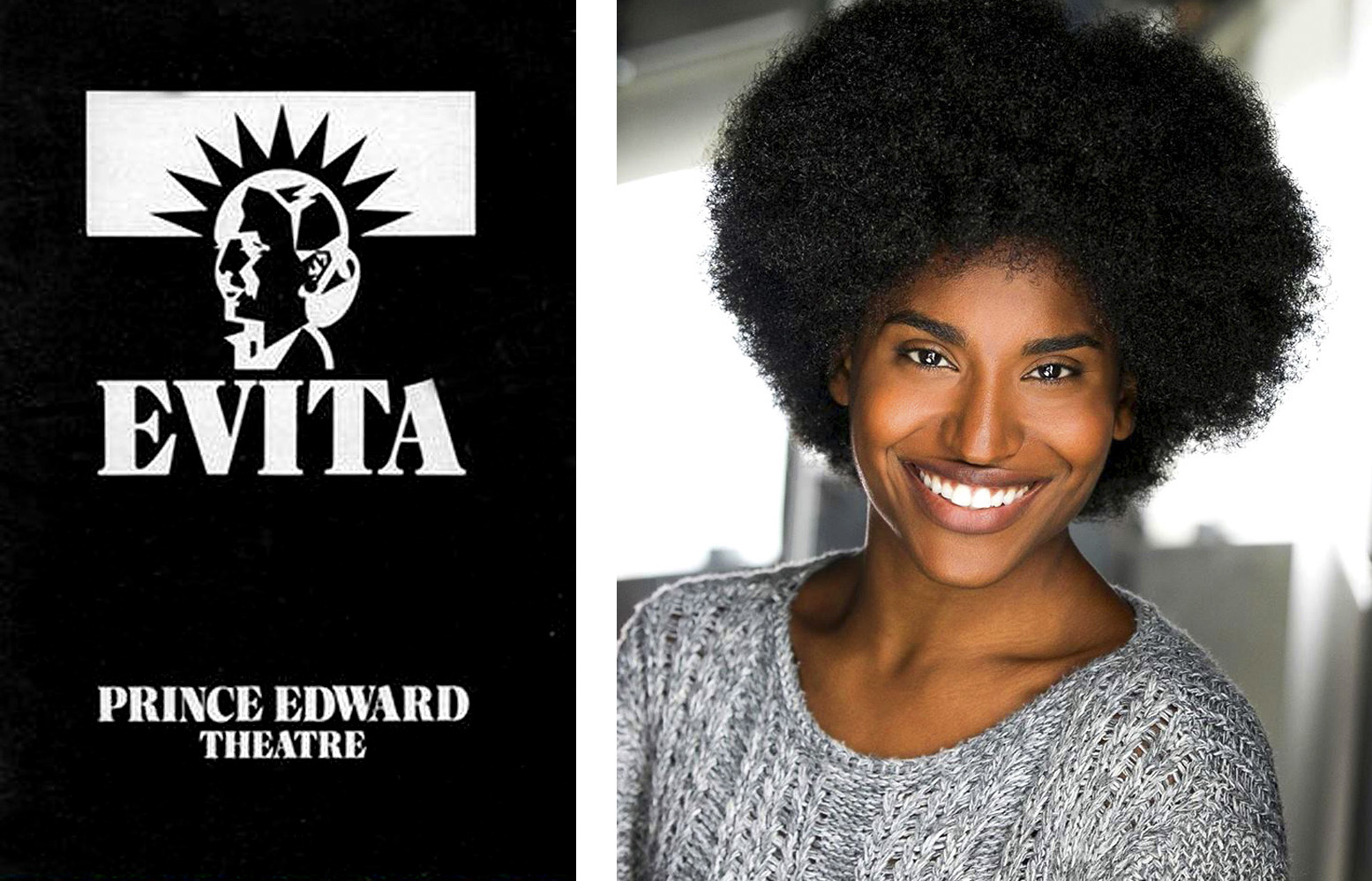
Programme for the original 1978 Evita and Mireira Mambo who was in the most recent London production
Mary Poppins is in two halves split by an interval. The first half has the best songs but the performers didn’t seem to be in the roles, it lacked warmth. Comparing it to the film is inevitable for most people and the one thing that was immediately noticeable was that it is near impossible for the performers to play their roles in any sort of quiet voice. They have to project even though miked up whereas in film it can easily be achieved.

It was in part two that the show really got into its stride with some great music and the performers really being the characters they are acting. The children and Petula Clark stood out but the other cast were all good and will settle into their roles in a short while. As this was London, it was surprising there was no reference to Dick Van Dyke’s awful cockney accent in the film; it would have got a laugh for sure.
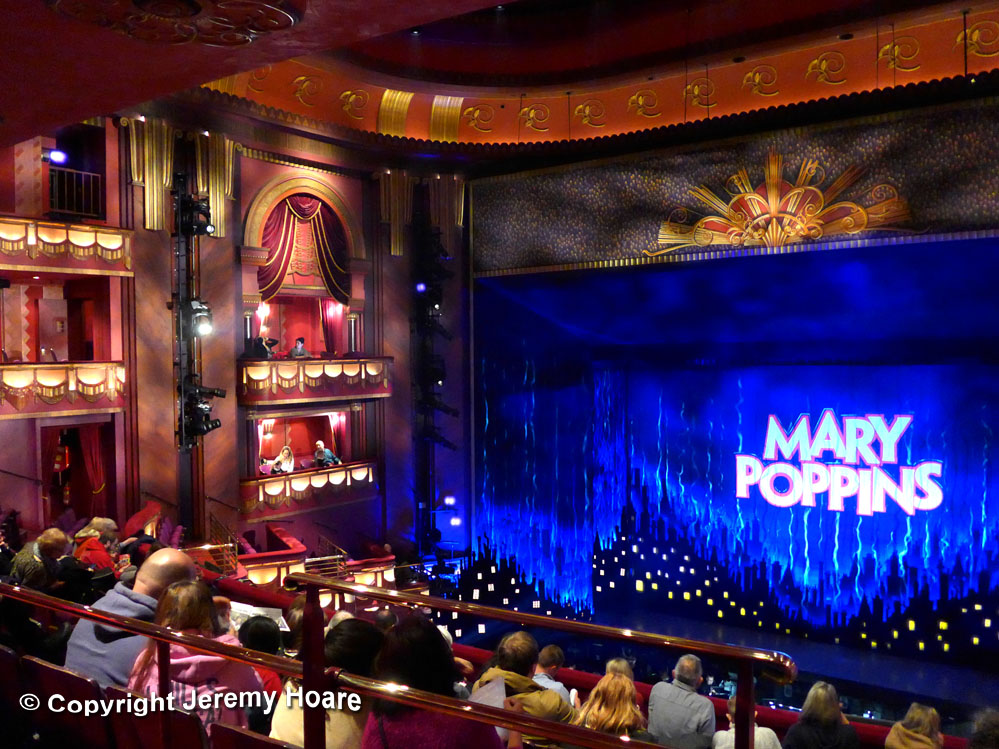
The dancing was excellent and made full use of the stage; the set design and lighting were fabulous. But it was the moment that Mary flew off at the end that was a truly great moment of theatre magic and had the audience roaring with approval.

The house where P L, Travers lived in Chelsea, London
From my view having been born into showbiz, some things didn’t quite click as they should have done; scene changes not quite in sync and lighting cues a bit off but I’m sure it will all come together more after further performances.

With a full house and highly appreciative audience giving a standing ovation for the finale, Mary Poppins was a decidedly enjoyable show for all ages which will delight and enthral audiences with the spirited production and cast. Well worth seeing.
A Tale of Two Curries – CoCo Ichibanya, London and Kyoto

CoCo Ichibanya in Kawaramachi, Kyoto
I have been to the Kawaramachi-Sanjo CoCo Ichibanya curry house branch in Kyoto Japan many times, and on each trip, I pay a visit to that particular branch for a lovely Chicken Katsu Curry. The food is always great in this branch, there are others in Kyoto but this is my favourite. The meal is always full of flavour and goes down well with a beer which is what you really need with a curry.
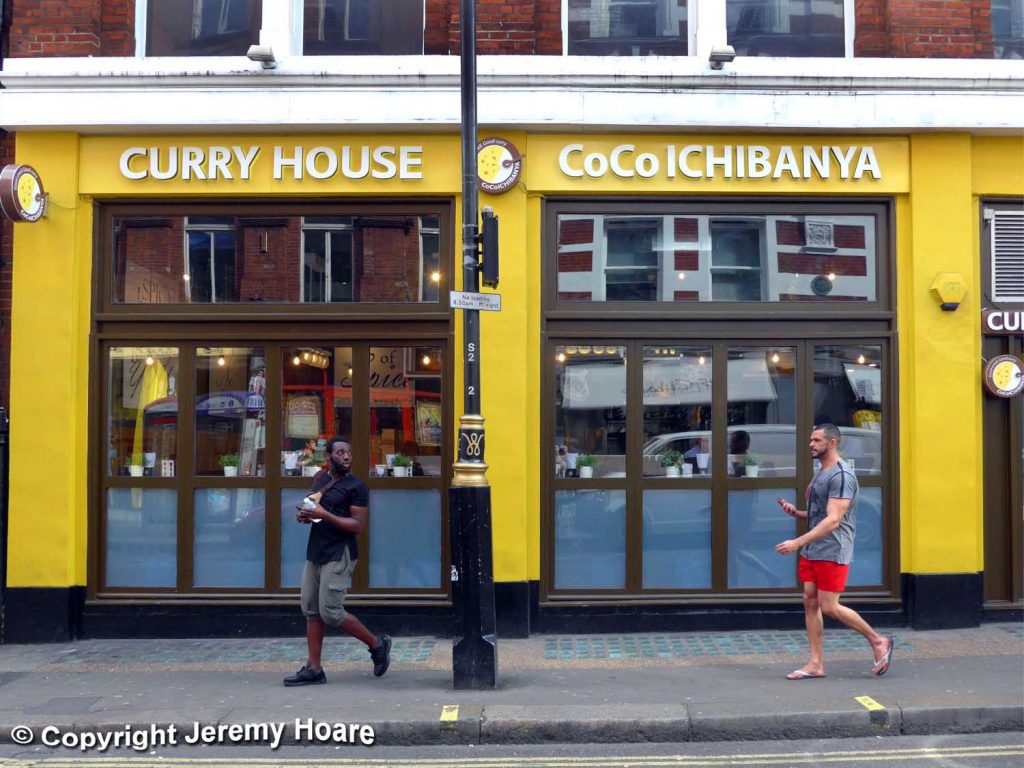
CoCoCo Ichibanya in London
So, I was more than delighted to see that they have opened a branch in London just off Leicester Square in Great Newport Street, and one evening a few weeks ago my Japanese partner and I decided to visit it for a Chicken Katsu Curry, our favourite to see what it was like.

London menu
The service was very good, I could not fault that, but, and this is a huge but – they do not serve beer, a curry house! Maybe they either can’t be bothered to apply for an alcohol licence or have been refused one.
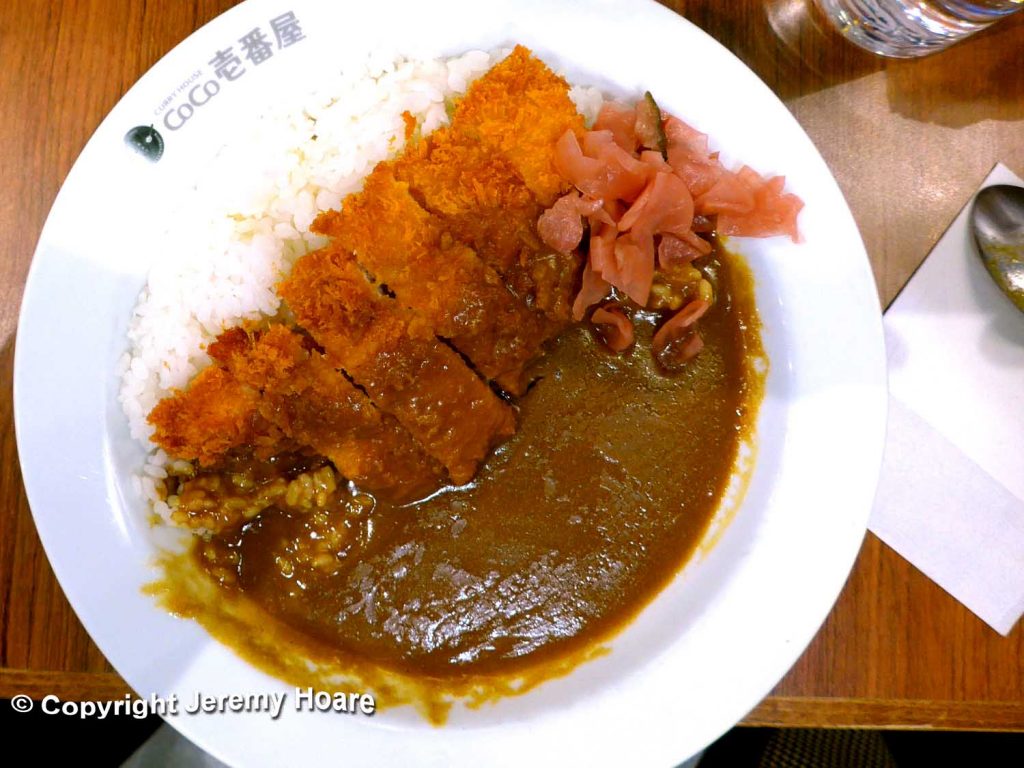
Chicken Katsu Curry in London
The chicken itself was perfectly done but the curry sauce should come with a full flavour, it was only around 70% of what it should have been. The heat, which is chilli obviously, was about right as standard but the flavour was way down on what we expected. This was not an authentic CoCo Ichibanya curry as I know it, more of an Anglicised version.
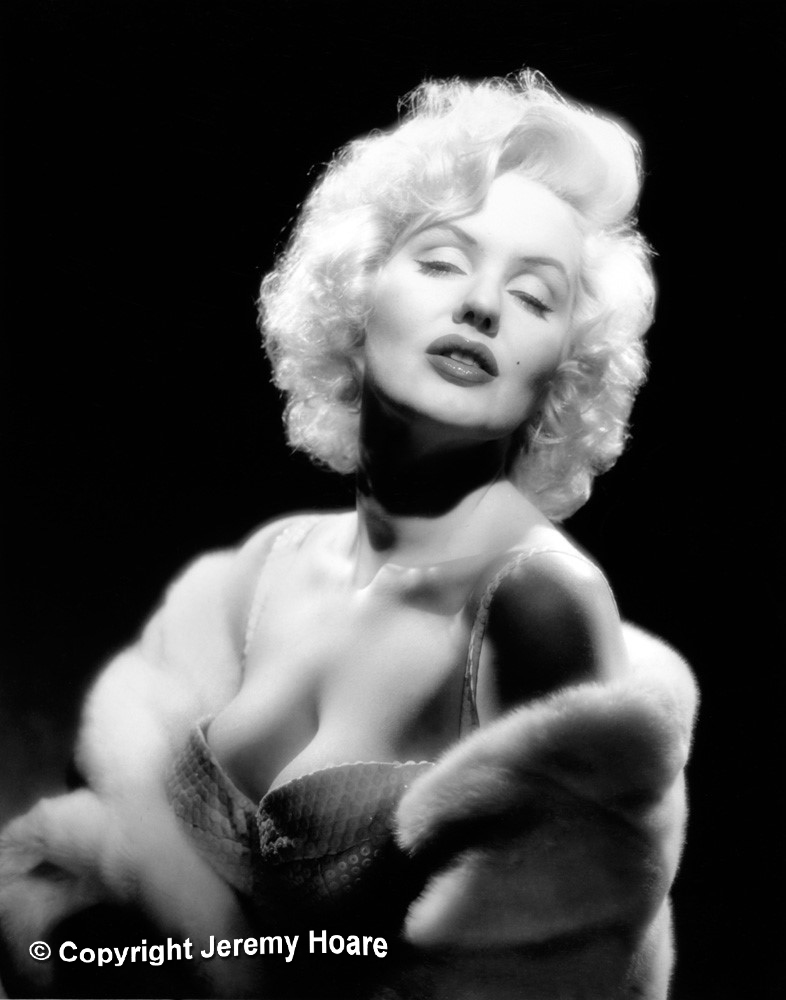
Pauline Bailey as Marilyn Monroe
The place is small, it used to be a Cranks restaurant where years ago I met Marilyn Monroe (actually professional look-a-like Pauline Bailey) to arrange a photo-shoot, but this latest incarnation has not made the best use of the space, too much is given over to the kitchen areas and not enough for tables, a poor design.

Kyoto menu with Yen prices
It was also expensive at £15.07 with the obligatory 12.5% tip included, compared to Kyoto where the same better meal would be just £6.96 and in Japan there is NO tipping anywhere, the price you see is what you pay. Yet people still think Japan is expensive!
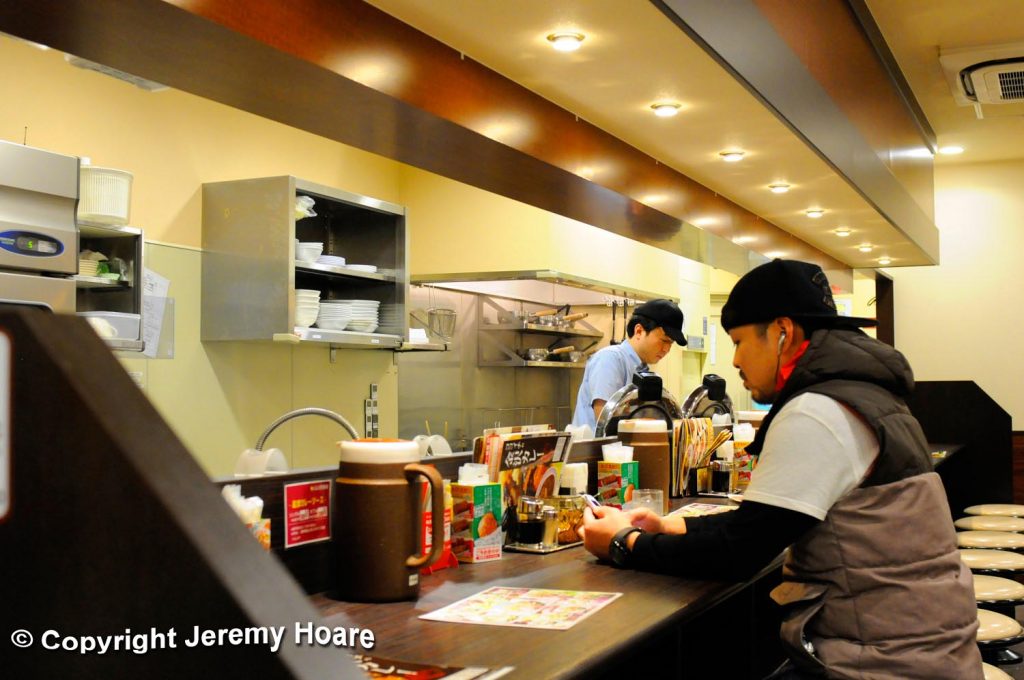
CoCo Ichibanya in Kyoto , eating at the counter bar
This is nothing like the experience that we’ve had in Kyoto many times, so I hope they sort this out very soon. We will not be visiting again until we know that things have changed for the better, we’ll give it a year. Then the curry should have the full flavour and also have beer available, just like in Kyoto!

Geisha Dreams in Swanage
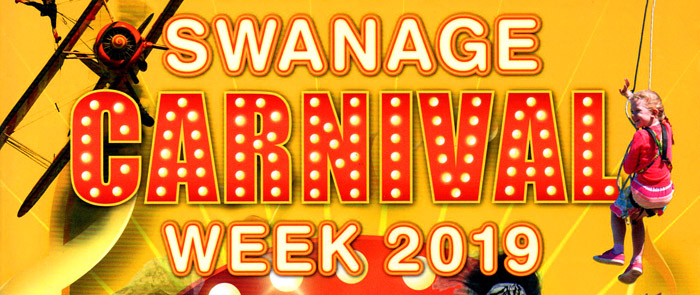
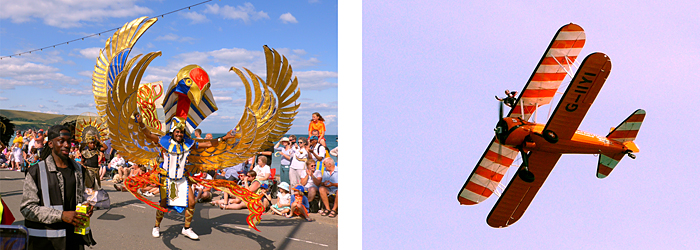
The Carnival Parade and a wingwalker on a stunt biplane
It’s the annual Swanage Carnival so I’m delighted that my latest book Geisha Dreams is in the independent Swanage Bookshop as it is the only bookshop in the country where I want it to be sold.
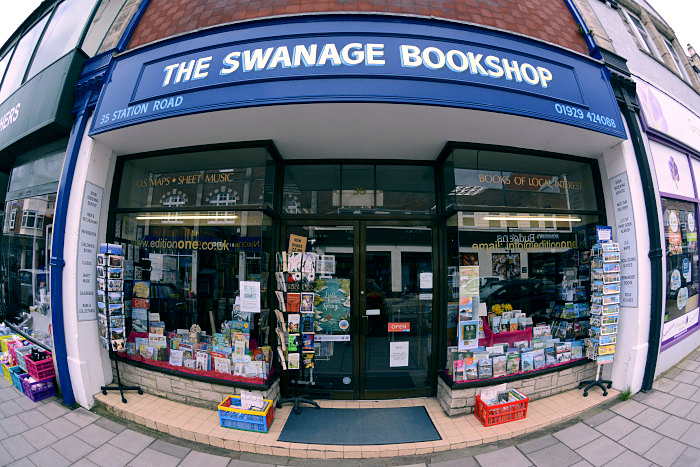
The Swanage Bookshop
I believe in having an exclusive deal with someone like Jill Blanchard who runs it, as she has done successfully for 30 years. It was started in the High Street and 10 years later moved to 35 Station Road where it has been for the last 20 years.
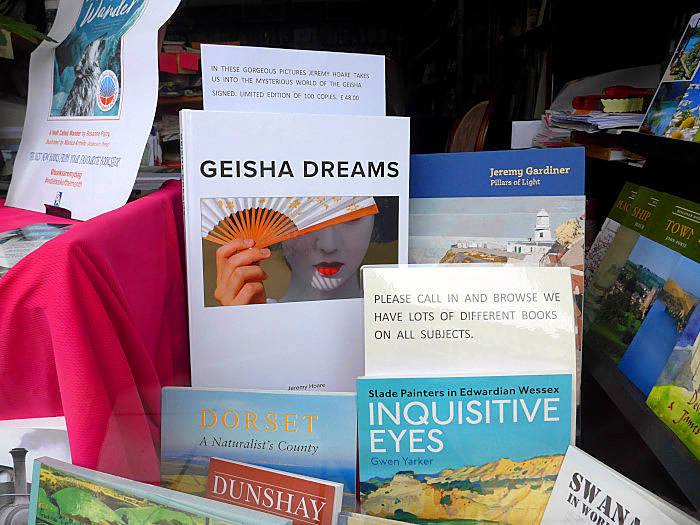
Geisha Dreams in The Swanage Bookshop window
This delightful and quirky bookshop is one of those places that exudes charm and character owing to the fact that it sells both new and second-hand books.

Through the Viewfinder and a cartoon of myself done in Hollywood USA
The first book I had published, ‘Through the Viewfinder’, was ten years ago but I was beaten by 125 years as in 1894 my great-grandfather Frederick Freeman Lloyd published his book ‘The Whippet and Race Dog’.
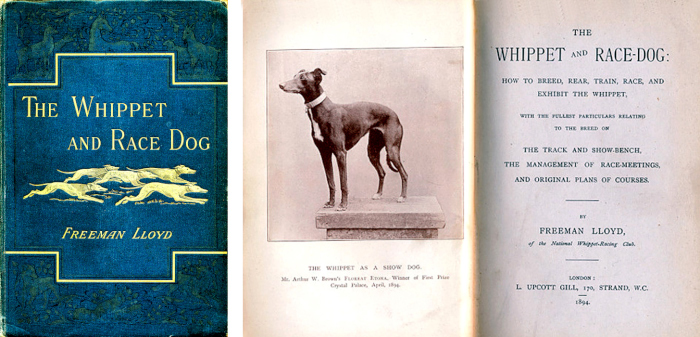
The Whippet and Race-Dog published 1894
He was also the first person in the family to go around the world which I found out when with my cousin Brian in Australia, we delved into the archives of the Adelaide Public Library and found microfiche copies of his regular ‘Sydney Morning Herald’ column focusing on dogs which were his life and passion.
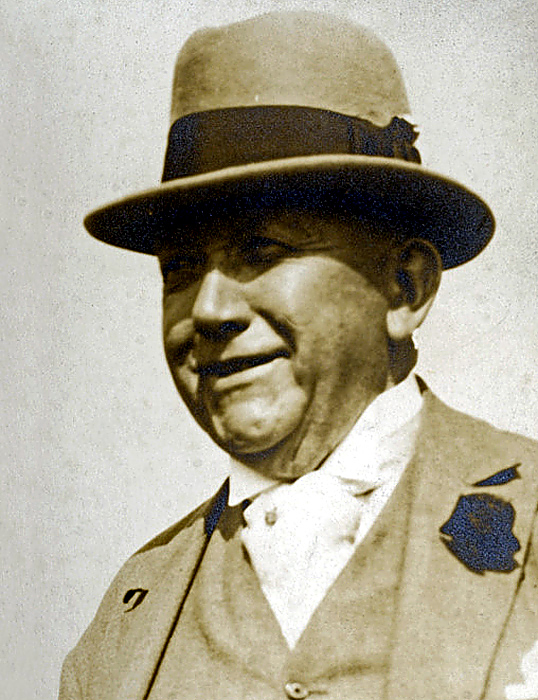
Freeman Lloyd in New York June 1929
Geisha Dreams came about by my taking photos over a 30-year period which have included 24 visits to Japan and I am fortunate and grateful to the people that helped me create this book.

Two images from Geisha Dreams
Lesley Downer, who has lived in the geisha world briefly and knows Japan well, is an acclaimed author, novelist and journalist whose latest book, The shogun’s Queen, has been a bestseller. So, I was delighted that I could persuade her to write a foreword for my book which she did which is quite lovely.

Lesley Downer at UCL and her novel The Shogun’s Queen
Suzanne Perrin is a lecturer and historian of Japanese culture and gardens who has lectured around the world. She helped me she helped by editing my introductory words which makes the book work well.

Suzanne Perrin giving her Hokusai talk at the Henry Sotheran bookshop
Finally, my stepmother Jennifer Hoare proofread wonderfully well, book designer Jim Allen whose ideas were invaluable, and finally Blissetts who printed it so beautifully, as one would expect from the company who print Hansard and are bookbinders to HM The Queen.

Blissetts printers in Acton
Geisha Dreams is a book I am very proud of and is available from the Swanage Bookshop in the lovely county of Dorset as well as online.
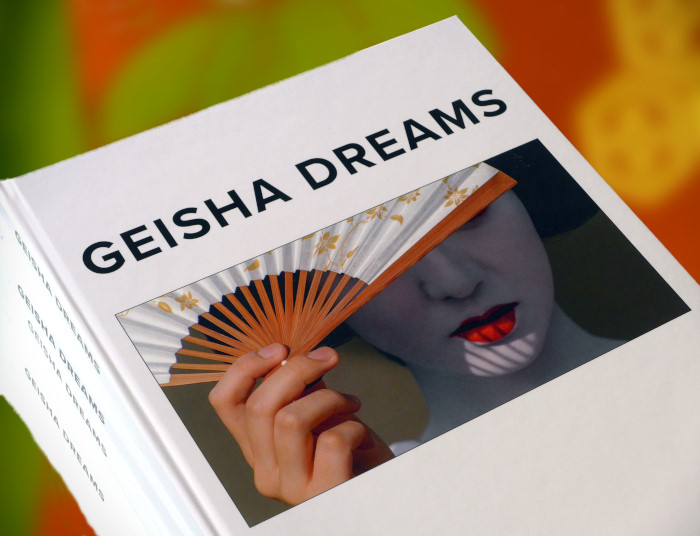
GEISHA DREAMS
‘Small Island’ at the National Theatre
 ‘Small Island’ and the National Theatre on the South Bank
‘Small Island’ and the National Theatre on the South Bank
As a member of the Society of Television & Design (STLD) through my career as Lighting Director for Central Television, myself and other members were invited to the National Theatre (NT) to see a camera rehearsal of ‘Small Island’ for NT Live, the play based on the novel by Andrea Levy and adapted for the stage by Helen Edmundson.
NT Live has been running for ten years and is a wonderful way for audiences around the world to see and appreciate the very best of London theatre.
 STLD members in Hi-Vis vests explore the backstage areas at the National Theatre
STLD members in Hi-Vis vests explore the backstage areas at the National Theatre
The reason for our visit was that the Chairman of STLD, Bernie Davis, was modifying the lighting from the original design by Paul Anderson so as to be seen live in 2,500 cinemas around the world as part of the National Theatre Live initiative. Theatre lighting is right for a seated audience but lighting for television generally works best if there is less contrast which a TV lighting director like Bernie Davis, who has done many of these events, would know how to do.
 National Theatre backstage areas
National Theatre backstage areas
After donning Hi-Vis vests, we were led on a tour around some of the backstage areas. The ability to do this well was built into the NT with covered walkways high up so public and private tours would not get in the way of work, they are also safer for everyone. We were able to go into all three of the theatres – the Dorfman, Lyttlelton and Olivier Theatres.
 National Theatre backstage areas
National Theatre backstage areas
The emphasis of the STLD tour was lighting and NT like all theatres is changing over from tungsten to LED lights. There is a real love for traditional tungsten and people are trying to keep it in use but LED is slowly taking over.
 View into the wings and the auditorium of the Lyttlelton Theatre at the National Theatre
View into the wings and the auditorium of the Lyttlelton Theatre at the National Theatre
The changeover will happen slowly as lighting designers get used to using LEDs and the price of them will drop as volume increases. LED use less electricity so are a Green way to go which is a key selling point for them. The ability to change to any colour via a control board is another. When I was lighting for television and theatre I could only use a gel placed in front of each lamp and had to choose the colour. I would have loved to have had the ability to adjust colour but LEDs were not in use then.
 STLD Chairman Bernie Davis talking to members in the Olivier Theatre and the Small Island stage 2019
STLD Chairman Bernie Davis talking to members in the Olivier Theatre and the Small Island stage 2019
Bernie Davis gave a talk on how he modified the lighting of the production for television which was fascinating and much more involved than people would believe. It involved watching a rough recording and going through it while making notes of what to change, this would usually take eight hours.
After lunch we sat with a full house to see the production in the Oliver which was essentially a final rehearsal for all the crew before the live event the next day.
 ‘Small Island’ – Photo credit National Theatre
‘Small Island’ – Photo credit National Theatre
The play was a brilliantly staged, directed and acted performance with a large spirited cast of forty. The design and lighting were beautifully integrated and the sound was excellent too. A great production that I’m sure the worldwide audience and at will enjoy as well as audiences who see it at the theatre.
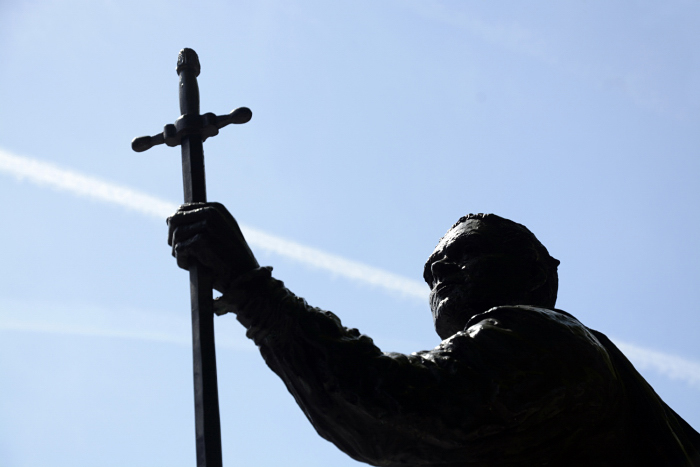
Laurence Olivier as Hamlet, created by the sculptor Angela Conner, in front of the National Theatre
Photo London 2019

Photo London 2019 at Somerset House
Each year for the last five, Photo London has just got better. Also bigger as it seems to have taken over the whole of London’s majestic Somerset House in The Strand.
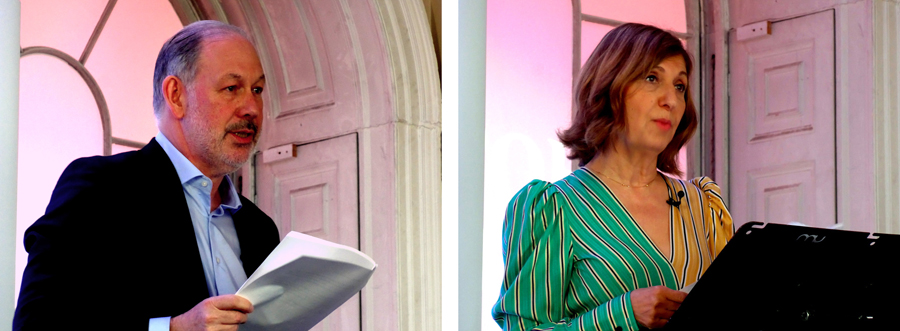 Michael Benson and Fariba Farshad opening Photo London 2019
Michael Benson and Fariba Farshad opening Photo London 2019
rganisers Michael Benson and Fariba Farshad have been surprised and delighted at t the way this has grown, as well they might be.
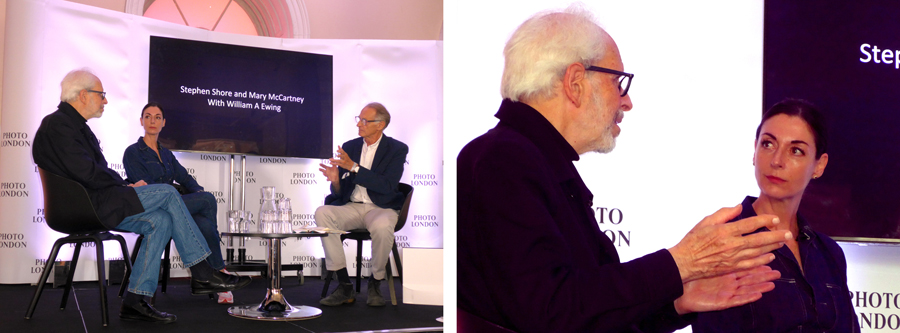
Stephen Shore and Mary McCartney with William Ewing
This year the press conference was William Ewing in conversation with the master of the banal, Stephen Shore, and Mary McCartney,the daughter of Paul and Linda, whose Royal Ballet monochrome images graced the exterior walls of the pavilion.

Stephen Shore exhibit at Photo London 2019

Mary McCartney’s Royal Ballet images at Photo London 2019
The exhibits from galleries around the world range across all genres and standards. Some superb work and some so ridiculously pretentious but great to have the contrast of fine art photography in one place.
The greatest overall change I noticed was that there were many more monochrome images than previously. This is not surprising as B&W has a more abstract quality than colour, usually but not always depending on the photographer. There were very nice images and some of the older ones were exceptional, probably as that’s what photographers used as a matter of course so were more conversant with it than colour.



I was fortunate enough to bump into two of the UK’s greatest photographers, Don McCullin and David Bailey, both who have been a major influence to many others. I reminded Don that he invited me for tea at his home a long time ago and he responded, “That was nice of me wasn’t it!” which it was. Speaking to David we talked about how we both worked for the great entrepreneurial showman Lew Grade. He told me a typical Lew joke on being asked, “What’s two and two?”, Lew’s response was, “Are you buying or selling?” Having worked for Lew for many years this is probably true!



Photo London 2019 proved once again that the UK is a major centre and influence on fine art photography, it could only benefit photographers and others interested in visual art. Congratulations to Michael and Fariba, a brilliant show once again!


